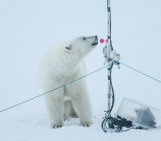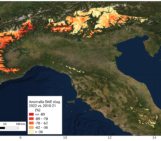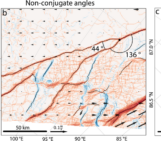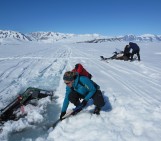
Santa Claus on the move [Credit: Frank Schwichtenberg, CC BY 3.0, Wikimedia Commons]
Because of global warming and polar amplification, temperature rises twice as fast at the North Pole than anywhere else on the planet. Could that be a problem for our beloved Santa Claus, who, according to the legend, lives there? It appears that Santa could very well have to move to one of its second residences before the end of this century. But even if he moves to another place, the smooth running of Christmas could be in jeopardy…
But…. Where does Santa live?
The most famous of Santa’s residence is in Lapland, Finland, at Korvatunturi. But since this area is a little isolated, Finns then moved it near the town of Rovaniemi. For Swedes, it’s in Gesunda, northwest of Stockholm. The Danes, them, are convinced that he lives in Greenland while according to the Americans, he lives in the town of North Pole, Alaska. In Norway, there is even disagreement within the country: some Norwegians believe he lives in Drøback, 50 km south of Oslo while other believe he lives in the Northernmost inhabited town in the world: Longyearbyen, Spitsbergen, where Santa even has its own postbox!
Even in the southern hemisphere, Christmas Island claims to be Santa’s second home.

Santa’s huge postbox in Longyearbyen, Spitsbergen [Credit: Marie Kotovitch] and Rovaniemi, Finland: the self-proclaimed “official hometown of Santa Claus” [Credit: Pixabay]
It seems that Santa Claus has many places to stay.. But according to the legend, Santa’s real permanent residence is in fact the true North Pole. However, as shown by the Arctic Report Card 2018, the Arctic sea-ice cover continues its declining trends, with this year’s summer extent being the sixth lowest in the satellite record (1979-2018). The latest IPCC 1.5°C warming special report states that “ice-free Arctic Ocean summers are very likely at levels of global warming higher than 2°C” relative to pre-industrials levels. Considering that the world is currently on course for between 2.6 to 4.8°C of warming relative to pre-industrial levels by 2100, Santa’s home is projected to sink into the Arctic Ocean before the end of the current century. It appears it would be time for Santa to start thinking about which one of his second residences he will choose to move to…
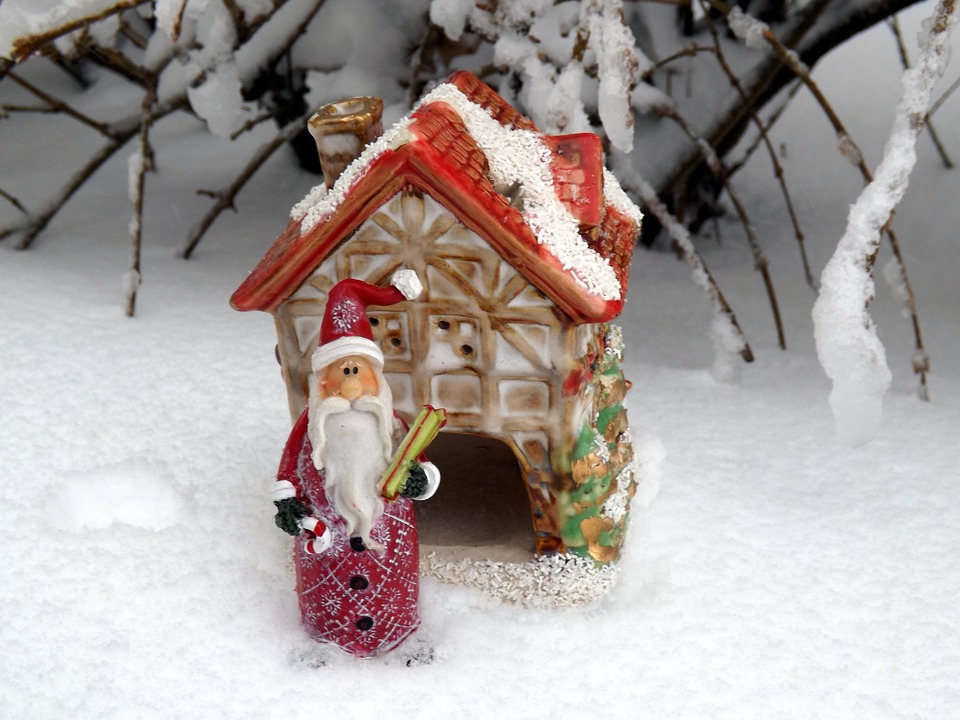
Will Santa have to find a new home? [Credit: Pixabay]
Rudolf might be in trouble…
Of course, if he moves away from the melting North Pole, Santa still needs snow at Christmas to be able to take off his sled. But, actually, this could become a problem.
This year, there was still no snow in Rovaniemi, Finland, the self-proclaimed “official hometown of Santa Claus”, by the end of November, making the local tourist attractions very worried. Luckily, it has now snowed there since, but how does this look like for the years to come? According to the latest Arctic Report Card, the long-term trends of terrestrial snow cover are negative.
Another problem which might complicate Santa’s work was underlined in a study published in 2016. This study showed that reindeers are getting smaller because of warmer Arctic temperatures. How come? During the long winter, reindeers are usually able to find their food (which consists of grasses, lichens and mosses) by brushing aside the snow that covers it. But because of the warmer temperatures, rain now falls on the existing snow cover and freezes. The animals’ diet is thus locked away under a layer of ice. As a result, reindeers are hungry and lose their babies or give birth to much leaner ones. The Arctic Report Card 2018 states that the population of wild reindeer in the Arctic has decreased by more than half in the last two decades.
All this is not going to get better, as Arctic temperatures for the past five years (2014-18) all exceed previous records. According to the Danish Meteorological Institute, in November 2016, Arctic temperatures were reaching an incredible peak at around -5°C while average temperature at this period usually is around -25°C.
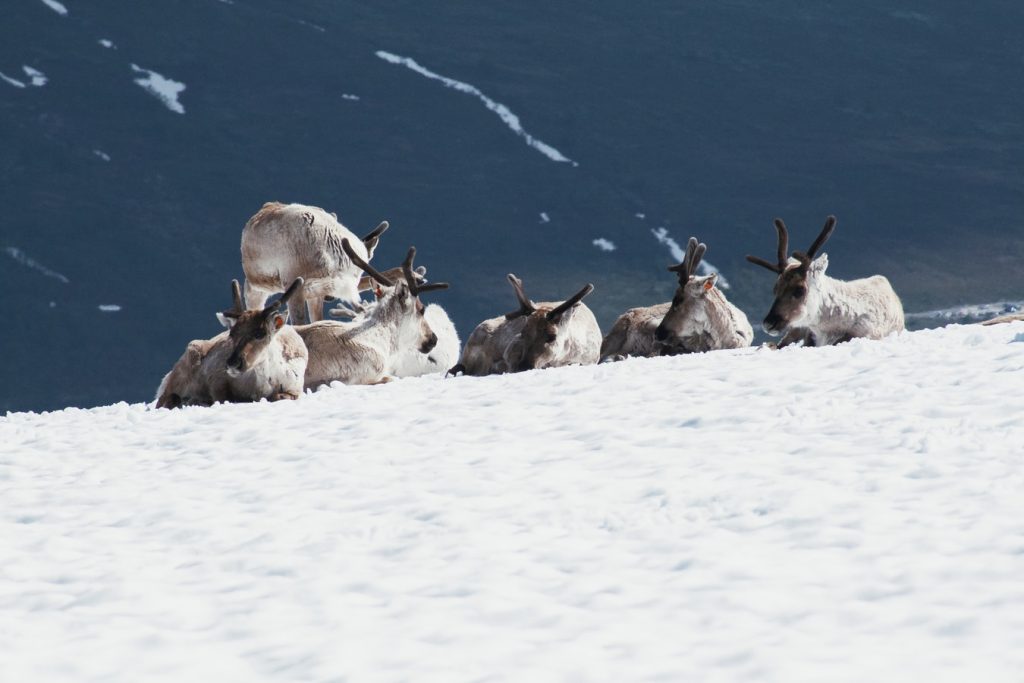
Climate change also affects reindeers [Credit: Photo by Red Hat Factory on Unsplash]
Christmas trees also at risk!
You may say that Santa is Santa and that he will be able to find a solution to all these problems. Let’s hope you’re right! But another problem is looming on the horizon: you might soon not be able to welcome Santa in your own home as it should with a beautiful Christmas tree.
Indeed, this summer’s heat waves have strongly affected Christmas tree crops everywhere in Europe. Moreover, a 2015 study shows that native Scandinavian Christmas trees are also affected by climate change, and more specifically by reduced snowfall. The latter acts like an insulation layer which protects the roots from the cold winter.
We hope that this post has made you realize the urgency of the fight against global warming! However, in the meantime, don’t forget that the most important to spend a nice Christmas is the Christmas spirit! We wish you all a very merry Christmas and a wonderful new year!
As a little Christmas gift..
- If you want to find out the truth about Santa’s real home, you can always check it by yourself by using the Santa Tracker by Google to follow Santa’s Christmas Eve trip and check where he comes back at the end of the night…
- The highlights of the Arctic Report Card 2018 are summarized in this video.
Further reading
- Arctic Report Card 2018
- IPCC Special Report Global Warming of 1.5°C
- Learn about the different homes for Santa
Edited by Clara Burgard

